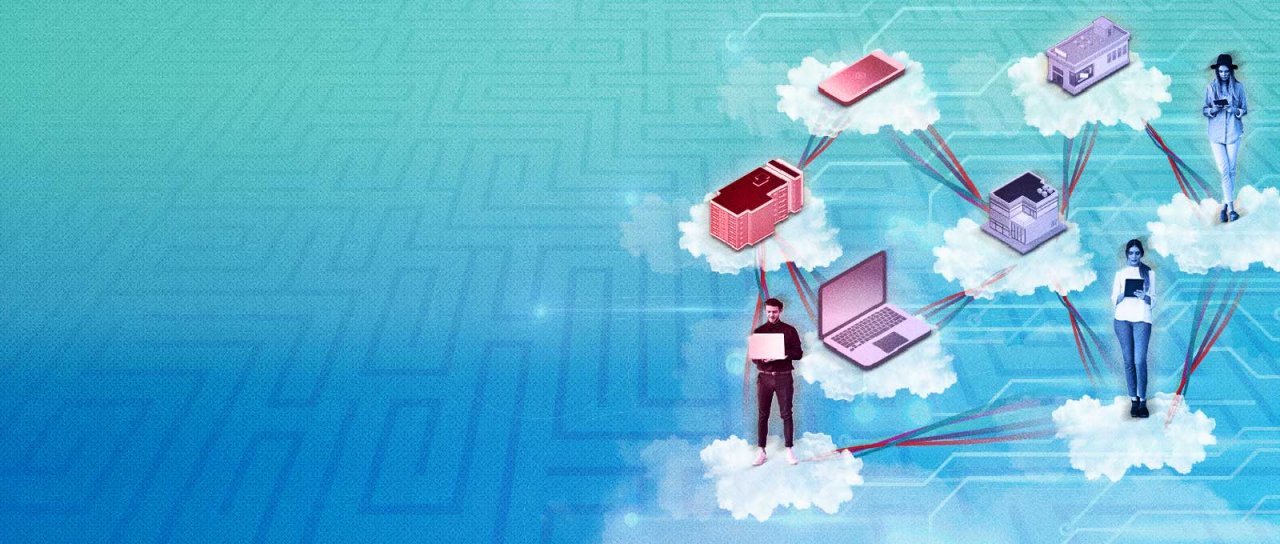Learning From Our Customers: How Collaboration and Diversity Boost Innovation
Foster innovation in your organization using the experiences of IT leaders.
Innovation could be summed up as fostering the implementation of improvement ideas. For me, as a Program Manager in the Transformation Office at Rackspace Technology, I see innovation as the culture of creating and using new tools to increase efficiency on any scale, whether it’s a department, organization or even an industry.
In this article, I look at how your organization can boost innovation by referencing my own experiences as well as things I’ve learned from three of our customers: Rajeev Khanna, CTO and SVP of IT Platform Services, Stephen Zucknovich, CTO at Kurtosys and Scott Strickland, EVP & Chief Information Officer at Wyndham Hotels & Resorts, all of whom have shared their views in previous Cloud Talk podcast episodes.
Where do ideas come from?
I believe that innovative sparks can be found at every level of an organization where experiences collide and amalgamate. Organizations that actively seek to de-silo know that innovation thrives where diverse cultures, habits and knowledge come together from different industries, functions and personalities. But to get it right, your organizational structure must be designed to nurture innovative spirit at a singular idea level.
And it’s not only inside your organization that you can find ideas. To stay current, we talk to our partners, suppliers and peers. Learning opportunities abound, and by knowing what's happening elsewhere, we can then decide what’s relevant and what to bring back to our teams.
The importance of cross-functional collaboration
Cross-functional initiatives are the best way to spark discussions and innovation. Leaders of all levels can enable innovation by encouraging and supporting collaboration between organizational units. Once you have those cross-functional communication and work forums, you must then proactively evaluate the innovation initiatives that are born from it to encourage deeper solutions that create value.
It may seem counterintuitive at first glance, but a corporate restructuring will often result in more collaboration among different teams. For example, when global organizations change the divisional structure from being product-centered to being regional or vice versa, there’s an opportunity to innovate, and usually, a greater willingness of employees to collaborate.
But it’s important to remember that innovation isn’t limited to a single role. As Rajeev Khanna, CTO and SVP of IT Platform Services, explained on Cloud Talk, innovation can come from all parts of an organization. Sometimes, the greatest ideas come from a junior staffer who works closest to your customers every day and knows their pain points and needs.
In another Cloud Talk episode, Stephen Zucknovich, CTO at Kurtosys, shared how crucial cross-functional collaboration and innovation is with developers. He explained that when developers fully understand the system in question, they can suggest improvements to reduce costs or accelerate customer service functions. The developer team then becomes a partner in contributing to the evolution of the platform.
How diversity and inclusivity contribute to innovation
Global organizations benefit from diversity of thought, as team members in different regions may think in different ways. However, there are cultural differences in how information is shared.
It’s important to foster an environment that supports open and safe idea exchanges that accommodates cultural differences in communication styles. In some cultures, people can be conservative, so it is necessary to find appropriate ways for everyone to contribute.
Encouraging inclusivity at your organization boosts collaboration, transparency, and engagement among your employees. This isn’t only good for morale — it also makes your team more productive. When everyone feels empowered and included, your company is three times more likely to be high performing.
Inclusivity also spurs innovation. Diverse teams bring forward diverse ideas that a homogeneous team may have never considered. An inclusive culture expands your company’s knowledge base, providing different perspectives and valuable new ways of thinking. This helps overcome challenges and stimulates business growth.
Fueling innovative ideas
Cross-functional collaboration creates a fertile ground for innovation. But collaboration isn’t enough by itself. Inspirational ideas must also be tested. An organization needs to balance its inspirational activity with incubating activities, otherwise the source of ideas dries up.
Rajeev Khanna revealed IT Platform Services used a companywide initiative to find inspiration through their Innovation Olympics, which provided over 300 ideas. It’s a perfect example of everyone at every level contributing ideas.
Scott Strickland, EVP & Chief Information Officer at Wyndham Hotels & Resorts, told us on Cloud Talk about a time when an innovation contest was run in a former company. Ideas were crowdsourced using anonymized data. The winner got $10,000, and the winning idea saved the company many times that amount very quickly.
What is the future of innovation?
I would argue that the nature of innovation will not change as it is a part of the human interaction within an organization. However, tools and techniques will continue to evolve. For example, AI and machine learning are connecting seemingly disparate datasets and isolating unexpected correlations to create new business opportunities. The true power lies in leveraging people and technology to continually improve how your organization works. The possibilities are endless once people, processes and technology are aligned in the pursuit of innovation.

What Makes a Successful Enterprise Innovation Program?
About the Authors

Program Manager, Transformation Office
Dennis Chernov
Dennis has over 20 years of experience in Corporate Strategy, Transformation and Innovation across machine building, media, materials and IT services. He has built several organizations for new businesses and helped transform global leaders like British Petroleum and Lafarge. Since joining Rackspace Technology, Dennis has primarily worked with the Transformation Office and IT PMO. He is a father of three kids, a husband to his wife Olga, and an active outdoorsman.
Read more about Dennis Chernov